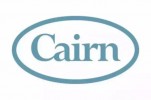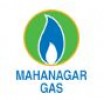
i
Gps
Renewables
Filter interviews by
Gps Renewables Senior Civil Engineer Interview Questions and Answers
Gps Renewables Senior Civil Engineer Interview Experiences
2 interviews found
I appeared for an interview before Jul 2024, where I was asked the following questions.
- Q1. As, i belong to technical background so mainly all the questions from the engineering field.
- Q2. Technical and background enquiry.
Interview Preparation Tips
I appeared for an interview before Jul 2024, where I was asked the following questions.
- Q1. About slipform technology
- Q2. About your CV mention work
Top trending discussions




Interview questions from similar companies

I applied via Naukri.com and was interviewed before Jun 2020. There was 1 interview round.
Interview Questionnaire
28 Questions
- Q1. What is mean by safety
- Q2. What is LEL
- Q3. What is RA
- Q4. What is JSA/JHA
- Ans.
JSA/JHA stands for Job Safety Analysis/Job Hazard Analysis. It is a process of identifying potential hazards and risks in a job or task.
JSA/JHA is a systematic approach to identify and mitigate potential hazards in a job or task
It involves breaking down a job or task into steps and analyzing each step for potential hazards
The analysis includes identifying the hazards, assessing the risks, and implementing controls to m...
- Q5. Role of HSE
- Ans.
HSE plays a crucial role in ensuring the safety and well-being of employees and the environment.
HSE stands for Health, Safety, and Environment.
It involves identifying and assessing potential hazards and implementing measures to control or eliminate them.
HSE also includes training employees on safety procedures and emergency response plans.
Examples of HSE measures include wearing personal protective equipment, conductin...
- Q6. What is Hchem
- Ans.
Hchem is not a known term or acronym in the engineering field.
Hchem is not a commonly used term in engineering
It is possible that the interviewer misspoke or meant to ask a different question
Without more context, it is difficult to provide a more specific answer
- Q7. What is Hazop
- Q8. What is confined space
- Q9. What is work at height
- Q10. Hazard of confined space
- Ans.
Confined spaces pose a significant hazard due to limited entry and exit points, poor ventilation, and potential for hazardous substances.
Limited entry and exit points can make it difficult to escape in case of an emergency
Poor ventilation can lead to a buildup of toxic gases or lack of oxygen
Potential for hazardous substances such as chemicals, fumes, or dust
Examples include tanks, silos, sewers, and tunnels
Proper trai...
- Q11. Precautions of confined space
- Ans.
Precautions to be taken while working in confined spaces
Proper ventilation and air quality testing
Use of personal protective equipment
Proper lighting and communication equipment
Training and certification for workers
Emergency rescue plan in place
- Q12. What is LEL&UEL
- Q13. What is competent person
- Q14. What is fire
- Ans.
Fire is a chemical reaction that releases heat, light, and various gases.
Fire is a rapid oxidation process that occurs when fuel (such as wood, paper, or gasoline) combines with oxygen in the presence of heat or a spark.
It releases heat, light, and various gases such as carbon dioxide, water vapor, and nitrogen oxides.
Fire can be beneficial (such as for cooking or heating) or destructive (such as in wildfires or house ...
- Q15. Types of fire
- Ans.
There are four types of fire: Class A, Class B, Class C, and Class D.
Class A fires involve ordinary combustibles such as wood, paper, or cloth.
Class B fires involve flammable liquids or gases such as gasoline, oil, or propane.
Class C fires involve electrical equipment such as appliances, wiring, or circuit breakers.
Class D fires involve combustible metals such as magnesium, titanium, or sodium.
- Q16. Type of extinguisher
- Q17. Modes of heat transfer
- Ans.
Modes of heat transfer include conduction, convection, and radiation.
Conduction is the transfer of heat through a material without any movement of the material itself.
Convection is the transfer of heat through the movement of fluids, such as air or water.
Radiation is the transfer of heat through electromagnetic waves, such as from the sun or a fire.
- Q18. How to prevent fire
- Q19. What is msds
- Ans.
MSDS stands for Material Safety Data Sheet.
MSDS provides information about hazardous chemicals and substances.
It includes information about the physical and chemical properties of the substance, health hazards, precautions for safe handling and use, and emergency procedures.
MSDS is required by law for all hazardous chemicals and substances used in the workplace.
It is important to read and understand the MSDS before usi...
- Q20. How to do firefighting
- Ans.
Firefighting involves identifying and extinguishing fires to prevent damage and loss of life.
Assess the situation and determine the type and size of fire
Use appropriate firefighting equipment such as fire extinguishers, hoses, and pumps
Follow safety protocols and wear protective gear
Coordinate with other firefighters and emergency responders
Evacuate people from the affected area
Monitor the situation and ensure the fire...
- Q21. How to prevent the accident
- Ans.
Prevent accidents by identifying potential hazards and implementing safety measures.
Conduct regular safety audits and risk assessments
Provide proper training and education to employees
Implement safety protocols and procedures
Use appropriate safety equipment and gear
Encourage a culture of safety and accountability
Regularly review and update safety policies and procedures
- Q22. How to investigate the accident
- Q23. Emergency procedure
- Q24. What is H2s
- Ans.
H2S is a colorless, flammable, and toxic gas with a strong odor of rotten eggs.
H2S is commonly known as hydrogen sulfide.
It is produced naturally by the breakdown of organic matter and is found in natural gas, crude oil, and volcanic gases.
It is highly toxic and can cause respiratory failure, loss of consciousness, and even death.
H2S is used in various industries such as oil and gas, mining, and pulp and paper.
It is al...
- Q25. Properties of H2s
- Ans.
H2S is a colorless, flammable, and toxic gas with a strong odor of rotten eggs.
H2S is highly flammable and can ignite easily
It is toxic and can cause respiratory failure
It has a distinctive odor of rotten eggs
H2S is used in the production of sulfuric acid and in the petroleum industry
- Q26. Hirerchy procedure
- Q27. Permissible exposure limit of H2s,co,co2,methane
- Ans.
Permissible exposure limits (PEL) are the maximum allowable concentrations of hazardous substances in the workplace.
H2S: PEL is 10 ppm (parts per million) over an 8-hour workday
CO: PEL is 50 ppm over an 8-hour workday
CO2: No specific PEL, but recommended exposure limit is 5,000 ppm over an 8-hour workday
Methane: No specific PEL, but recommended exposure limit is 1,000 ppm over an 8-hour workday
- Q28. Short term exposure limit of H2s
- Ans.
Short term exposure limit (STEL) of H2S is 10 ppm.
STEL is the maximum concentration of a substance that a worker can be exposed to for a short period of time without suffering from immediate or long-term health effects.
The STEL for H2S is set at 10 ppm (parts per million) by OSHA (Occupational Safety and Health Administration).
Exposure to H2S at levels above the STEL can cause symptoms such as eye irritation, headache,...
Interview Preparation Tips

I applied via Recruitment Consultant and was interviewed in Dec 2020. There were 6 interview rounds.
Interview Questionnaire
2 Questions
- Q1. 1st round is technical , 2nd is values & behaviors , 3rd is assessment road
- Q2. Be clear on values & behaviours , practice assement round offline before attempting
Interview Preparation Tips

I applied via Naukri.com and was interviewed in Oct 2020. There were 3 interview rounds.
Interview Questionnaire
1 Question
- Q1. The HR round was very pathetic. Sreethala took my HR round.
Interview Preparation Tips
Mumbai location. They will take all the interview rounds. The HR will ask you to submit all documents and last moment they will cancel your candidature without giving you any specific reason.

(2 Questions)
- Q1. What is expected salary
- Q2. How quick you can join
- Ans.
I can join your company within two weeks, allowing time for a smooth transition and handover of my current responsibilities.
I need to provide my current employer with a two-week notice period.
This timeframe allows me to ensure a proper handover of my projects.
If needed, I can negotiate with my current employer for an earlier release.
I am eager to start and can prepare for onboarding during this notice period.
Interview Preparation Tips

I applied via Company Website and was interviewed in May 2024. There were 2 interview rounds.
Behavioral questions and resume delve
Pmi - product management information
Interview Preparation Tips

I applied via Approached by Company and was interviewed before Feb 2018. There were 2 interview rounds.
Interview Preparation Tips
Experience: ESP commissioning Eng. installation of surface equipment vsd drives. Trouble shooting.
General Tips: over telephonic talk I gave an interview and discussed about the job and my responsibilities.
Skills: Communication, Problem Solving
Duration: 1-3 Months

Project Engineer Interview Questions & Answers
Mahanagar Gasposted on 23 May 2021
I applied via Walk-in and was interviewed in Jul 2020. There was 1 interview round.
Interview Questionnaire
1 Question
- Q1. About CGD Planning, execution and HSE
Interview Preparation Tips

Interview Questionnaire
5 Questions
- Q1. What is difference between GTAW and TIG welding
- Q2. Draw Mahanagar gas network diagram with pressure variation
- Ans.
A Mahanagar gas network diagram with pressure variation needs to be drawn for the Project Engineer interview.
The diagram should include all the pipelines and their respective pressure levels.
The pressure variation should be shown using different colors or shades.
The diagram should also include the location of gas stations and regulators.
The pressure levels should be labeled and explained in a legend.
The diagram should ...
- Q3. What is risk and hazard
- Q4. Methane chemical composition
- Ans.
Methane is a chemical compound with the molecular formula CH4.
Methane is the simplest hydrocarbon.
It is a colorless, odorless gas.
It is highly flammable and burns with a blue flame.
Methane is the main component of natural gas.
It is produced naturally by anaerobic digestion of organic matter.
Methane is used as a fuel for heating and cooking.
It is also used as a feedstock for the production of chemicals such as methanol ...
- Q5. Pipe diameter used in mahanagar gas
- Ans.
The pipe diameter used in Mahanagar Gas varies depending on the specific project requirements.
The pipe diameter used in Mahanagar Gas projects is determined based on factors such as gas flow rate, pressure, and distance.
For high-pressure gas transmission pipelines, larger diameter pipes are typically used to minimize pressure drop.
In distribution pipelines, smaller diameter pipes are used to supply gas to individual co...
Gps Renewables Interview FAQs
Tell us how to improve this page.
Gps Renewables Interviews By Designations
- Gps Renewables Senior HR Executive Interview Questions
- Gps Renewables Senior Engineer Interview Questions
- Gps Renewables Project Manager Interview Questions
- Gps Renewables Mechanical Technician Interview Questions
- Gps Renewables Senior Electrical Engineer Interview Questions
- Gps Renewables Assistant Manager Interview Questions
- Gps Renewables Sr Executive- HSE Interview Questions
- Gps Renewables Senior Civil Engineer Interview Questions
- Show more
Interview Questions for Popular Designations
- Senior Engineer Interview Questions
- Project Engineer Interview Questions
- Junior Engineer Interview Questions
- Civil Site Engineer Interview Questions
- Civil Engineer Interview Questions
- Field Engineer Interview Questions
- Billing Engineer Interview Questions
- Senior Site Engineer Interview Questions
- Show more
Overall Interview Experience Rating
based on 2 interview experiences
Difficulty level
Duration
Interview Questions from Similar Companies
Gps Renewables Senior Civil Engineer Reviews and Ratings
based on 4 reviews
Rating in categories
|
Senior Engineer
18
salaries
| ₹7.1 L/yr - ₹12.5 L/yr |
|
Assistant Manager
17
salaries
| ₹9.6 L/yr - ₹13 L/yr |
|
Scientist
10
salaries
| ₹11.5 L/yr - ₹12.5 L/yr |
|
Assistant Project Manager
10
salaries
| ₹10 L/yr - ₹16 L/yr |
|
Project Manager
9
salaries
| ₹16.5 L/yr - ₹20.8 L/yr |

Petrofac

Baker Hughes

bp

Cairn Energy
- Home >
- Interviews >
- Gps Renewables Interview Questions














